NUR 2790 Final Exam Q & A (Latest 2021 / 2022)
Document Content and Description Below
CHAPTER 51: CARE OF PATIENTS WITH MUSCULOSKELETAL TRAUMA (30% OF FINAL EXAM) MULTIPLE CHOICE 1. A nurse assesses a client with a fracture who is being treated with skeletal traction. Which assessment... should alert the nurse to urgently contact the health provider? a. Blood pressure increases to 130/86 mm Hg b. Traction weights are resting on the floor c. Oozing of clear fluid is noted at the pin site d. Capillary refill is less than 3 seconds ANS: B The immediate action of the nurse should be to reapply the weights to give traction to the fracture. The health care provider must be notified that the weights were lying on the floor, and the client should be realigned in bed. The clients blood pressure is slightly elevated; this could be related to pain and muscle spasms resulting from lack of pressure to reduce the fracture. Oozing of clear fluid is normal, as is the capillary refill time. Weights should not be removed without a prescription. They should not be lifted manually or allowed to rest on the floor. Weights should be freely hanging at all times. Inspect the skin Q8H for S/S of irritation or inflammation. Remove the belt or boot that is used for skin traction Q8H to inspect under the device. 2. A nurse coordinates care for a client with a wet plaster cast. Which statement should the nurse include when delegating care for this client to an unlicensed assistive personnel (UAP)? a. Assess distal pulses for potential compartment syndrome. b. Turn the client every 3 to 4 hours to promote cast drying. c. Use a cloth-covered pillow to elevate the clients leg. d. Handle the cast with your fingertips to prevent indentations. ANS: C When delegating care to a UAP for a client with a wet plaster cast, the UAP should be directed to ensure that the extremity is elevated on a cloth pillow instead of a plastic pillow to promote drying. The client should be assessed for impaired arterial circulation, a complication of compartment syndrome; however, the nurse should not delegate assessments to a UAP. The client should be turned every 1 to 2 hours to allow air to circulate and dry all parts of the cast. Providers should handle the cast with the palms of the hands to prevent indentations. 3. A nurse obtains the health history of a client with a fractured femur. Which factor identified in the clients history should the nurse recognize as an aspect that may impede healing of the fracture? a. Sedentary lifestyle b. A 30 pack-year smoking history c. Prescribed oral contraceptives d. Pagets disease ANS: D Pagets disease and bone cancer can cause pathologic fractures such as a fractured femur that do not achieve total healing. The other factors do not impede healing but may cause other health risks. Causes of Pathological Fractures: • Osteogenesis imperfecta • Rickets • Osteomalacia • Osteoporosis • Hyperparathyroidism • Cushing’s syndrome • Paget’s disease: a chronic form of osteitis (osteitis deformans) of unknown cause affecting older people, causing thickening and hypertrophy (enlargement) of the long bones and deformity of the flat bones • Neoplasms • Cystic bone disease • Primary benign bone tumor • Primary malignant bone tumor • Infection • Irradiation 4. An emergency department nurse cares for a client who sustained a crush injury to the right lower leg. The client reports numbness and tingling in the affected leg. Which action should the nurse take first? a. Assess the pedal pulses. b. Apply oxygen by nasal cannula. c. Increase the IV flow rate. d. Loosen the traction. ANS: A These symptoms represent early warning signs of acute compartment syndrome. In acute compartment syndrome, sensory deficits such as paresthesias precede changes in vascular or motor signs. If the nurse finds a decrease in pedal pulses, the health care provider should be notified as soon as possible. Vital signs need to be obtained to determine if oxygen and intravenous fluids are necessary. Traction, if implemented, should never be loosened without a providers prescription. Acute Compartment Syndrome: condition in which increased pressure within one or more compartments reduces circulation to the area (commonly in the lower leg tibial fractures and forearm) • Can begin 6 to 8 hrs after an injury or take up to 2 days to appear 5. A nurse assesses an older adult client who was admitted 2 days ago with a fractured hip. The nurse notes that the client is confused and restless. The clients vital signs are heart rate 98 beats/min, respiratory rate 32 breaths/min, blood pressure 132/78 mm Hg, and SpO2 88%. Which action should the nurse take first? a. Administer oxygen via nasal cannula. b. Re-position to a high-Fowlers position. [Show More]
Last updated: 1 year ago
Preview 1 out of 12 pages
Reviews( 0 )
Document information
Connected school, study & course
About the document
Uploaded On
Jun 18, 2021
Number of pages
12
Written in
Additional information
This document has been written for:
Uploaded
Jun 18, 2021
Downloads
0
Views
22


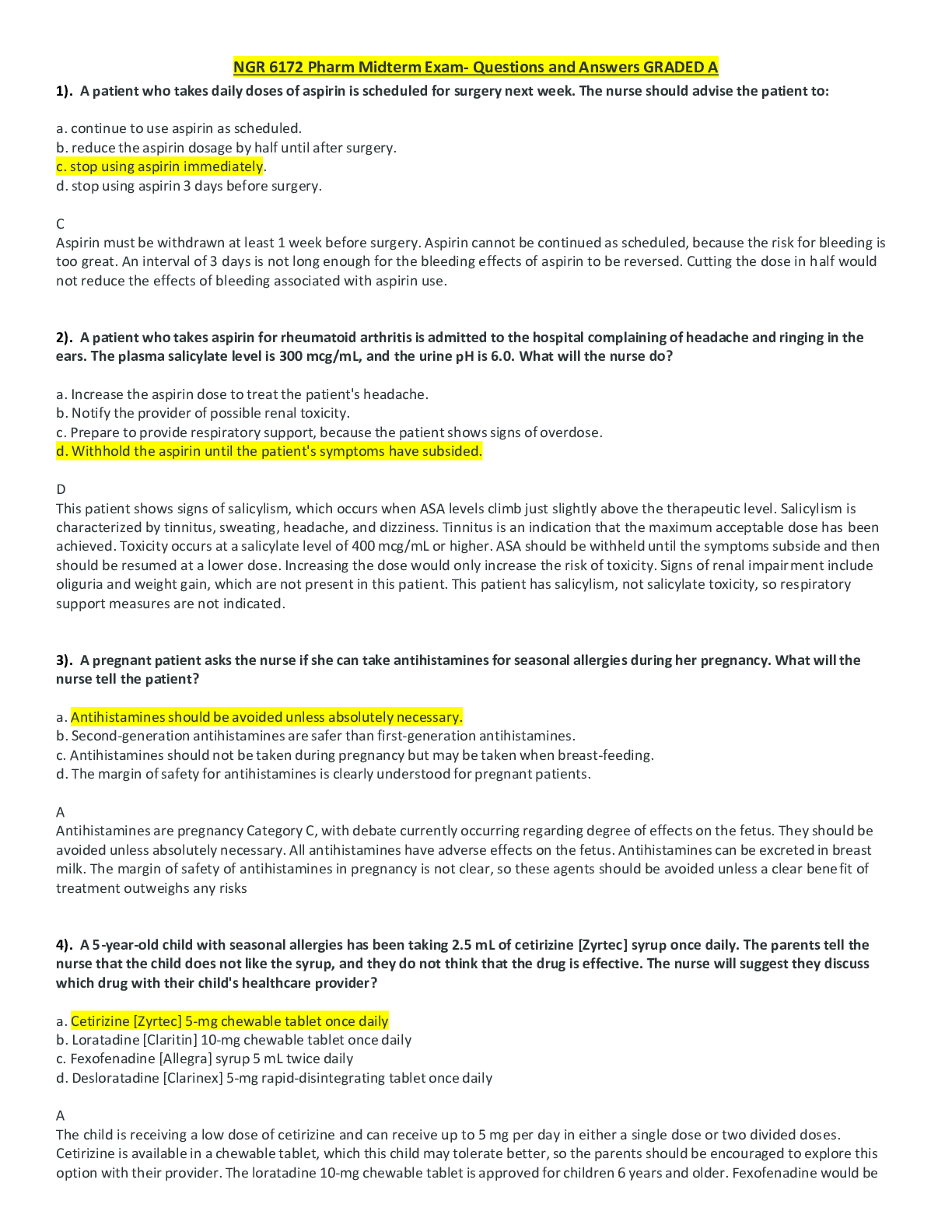

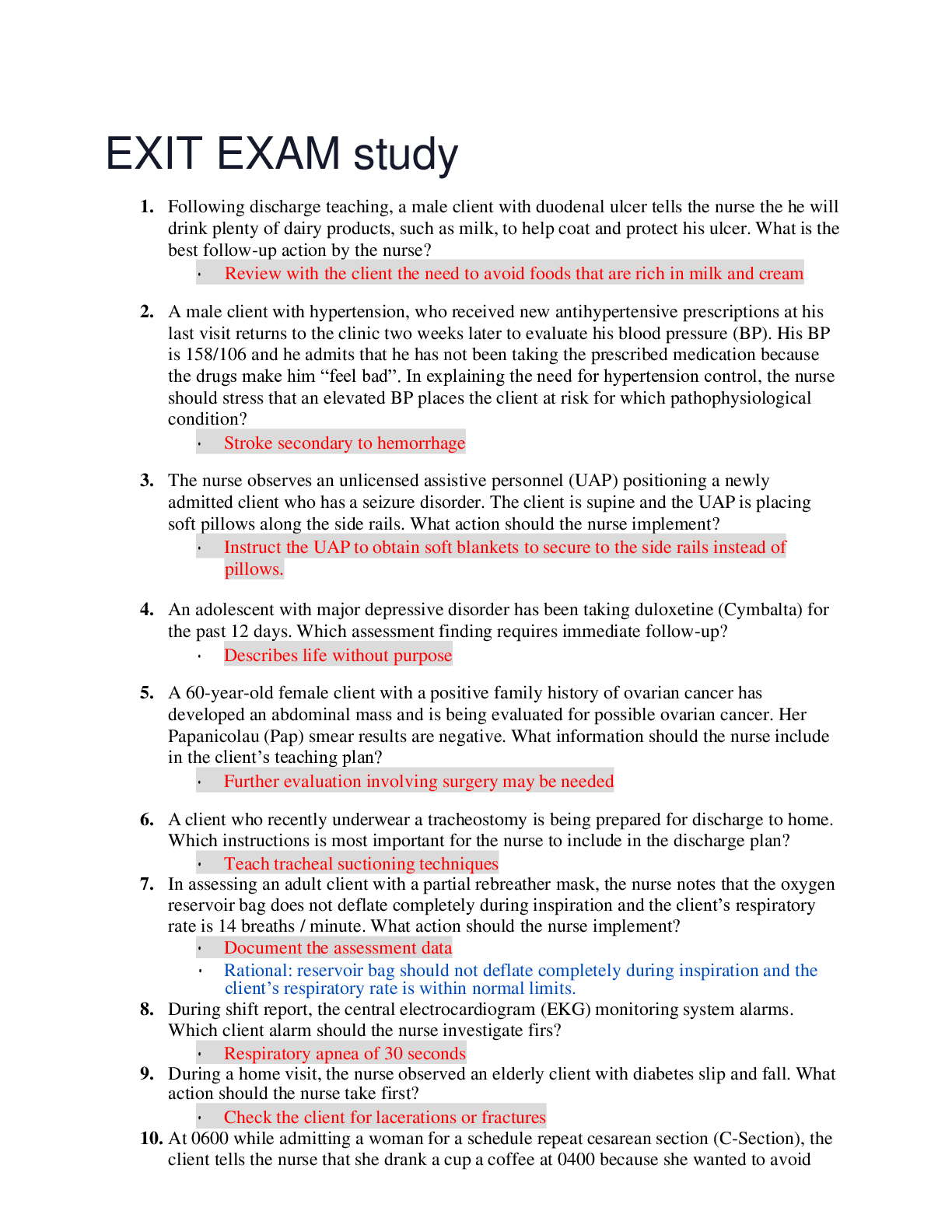
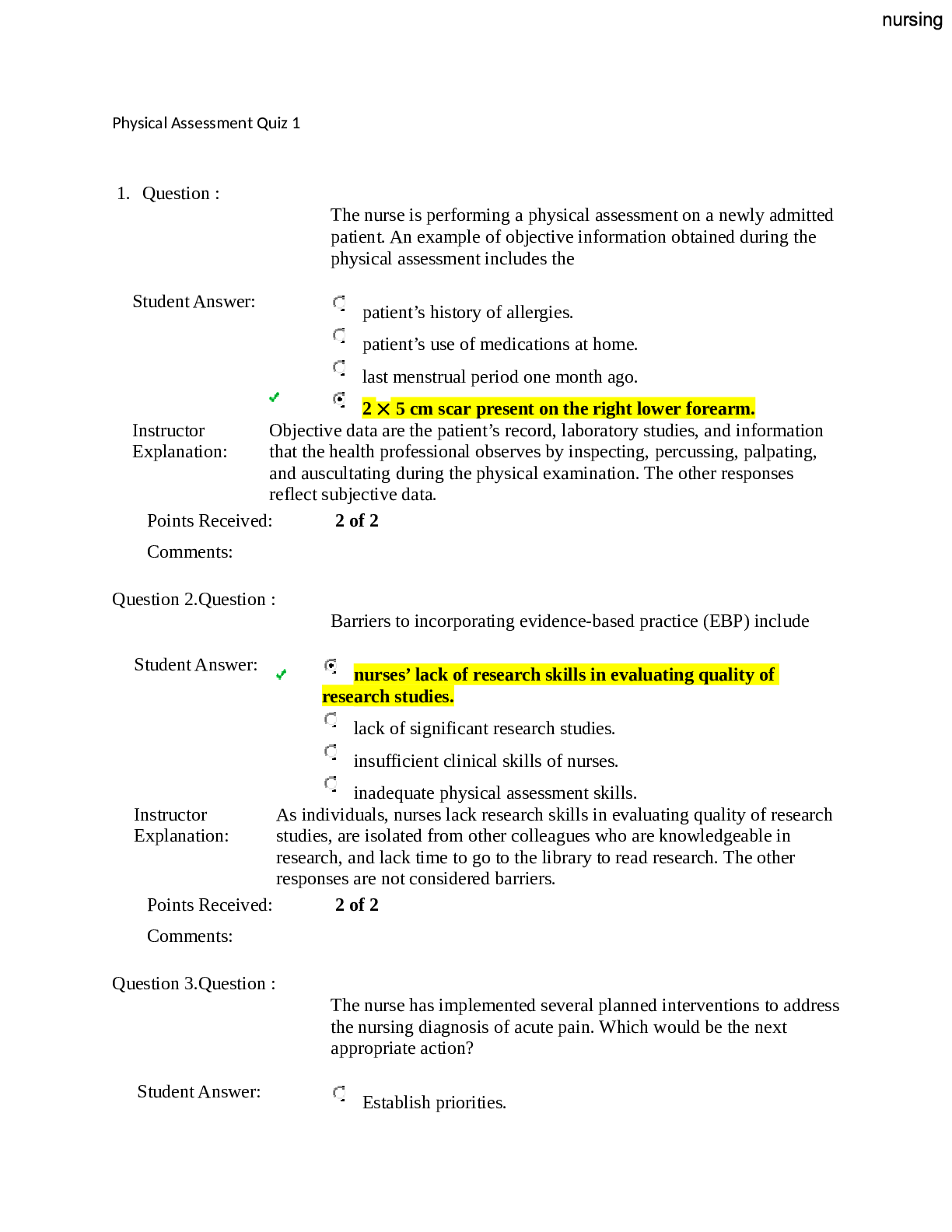
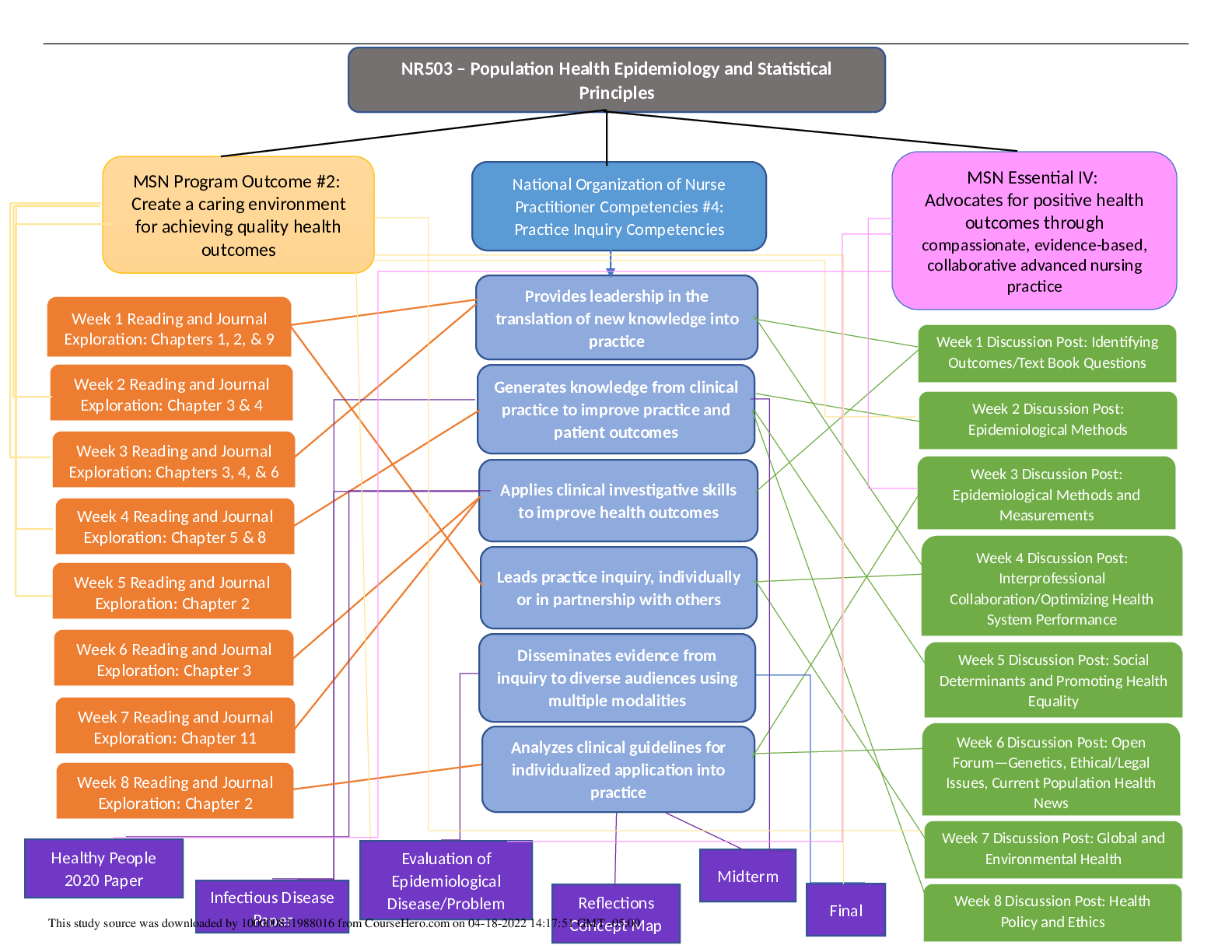

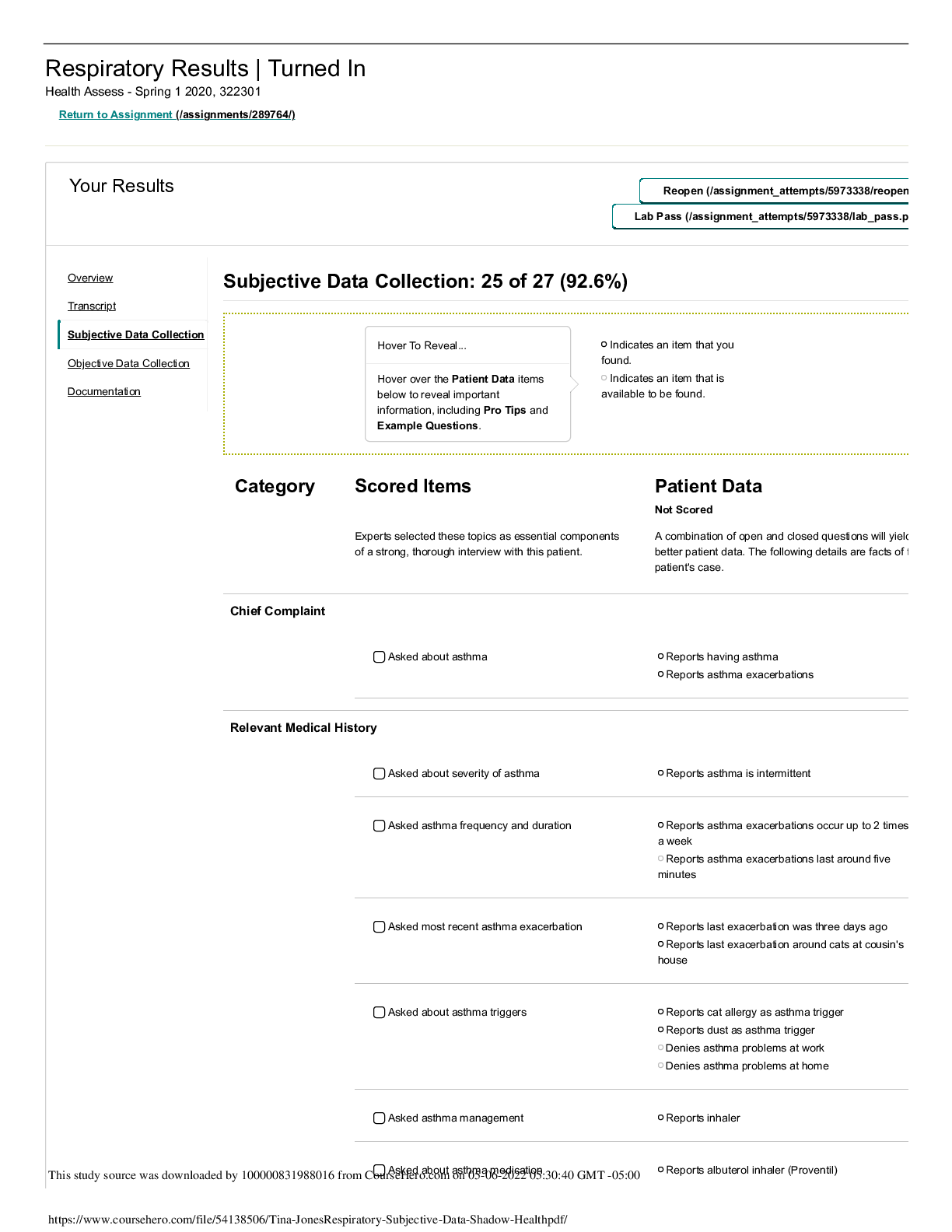
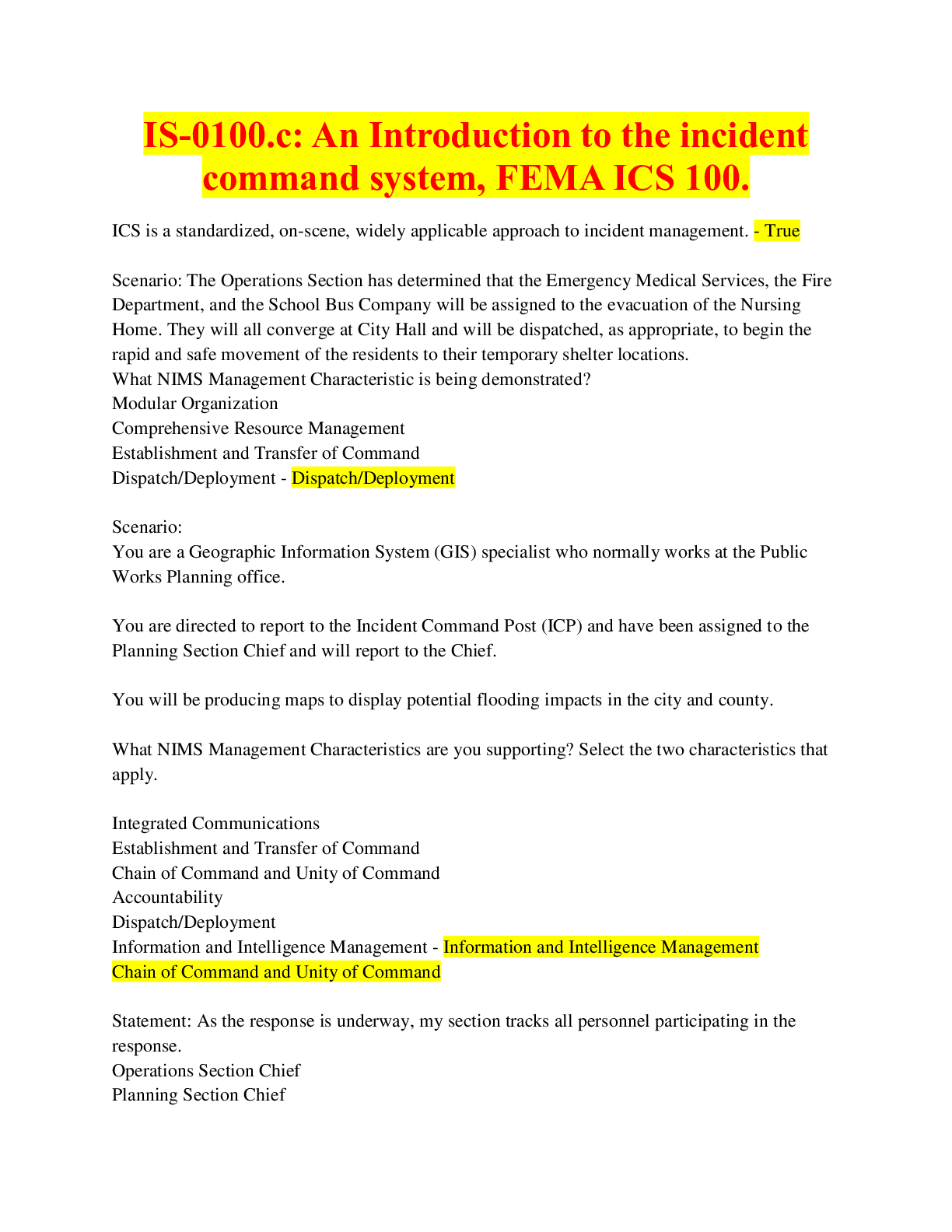

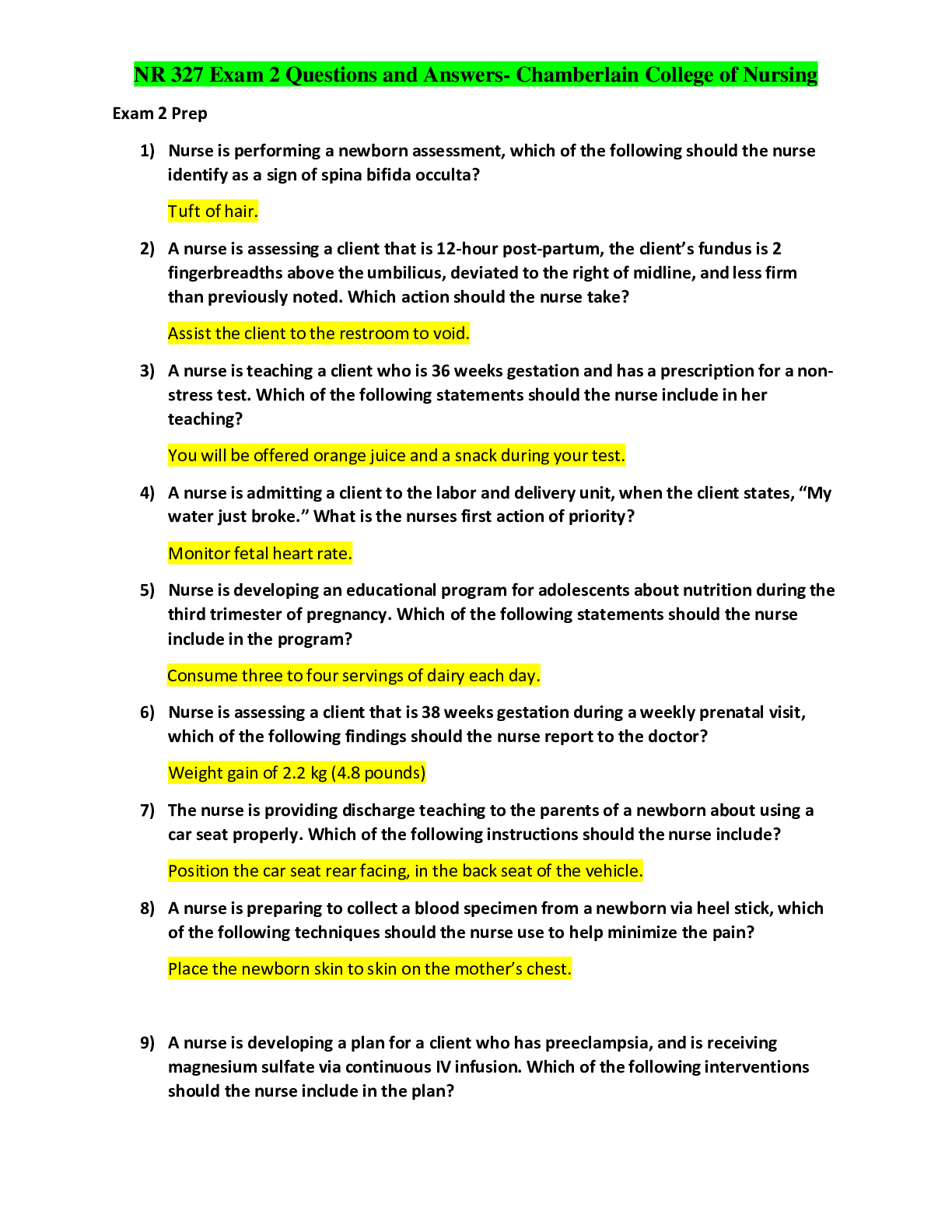

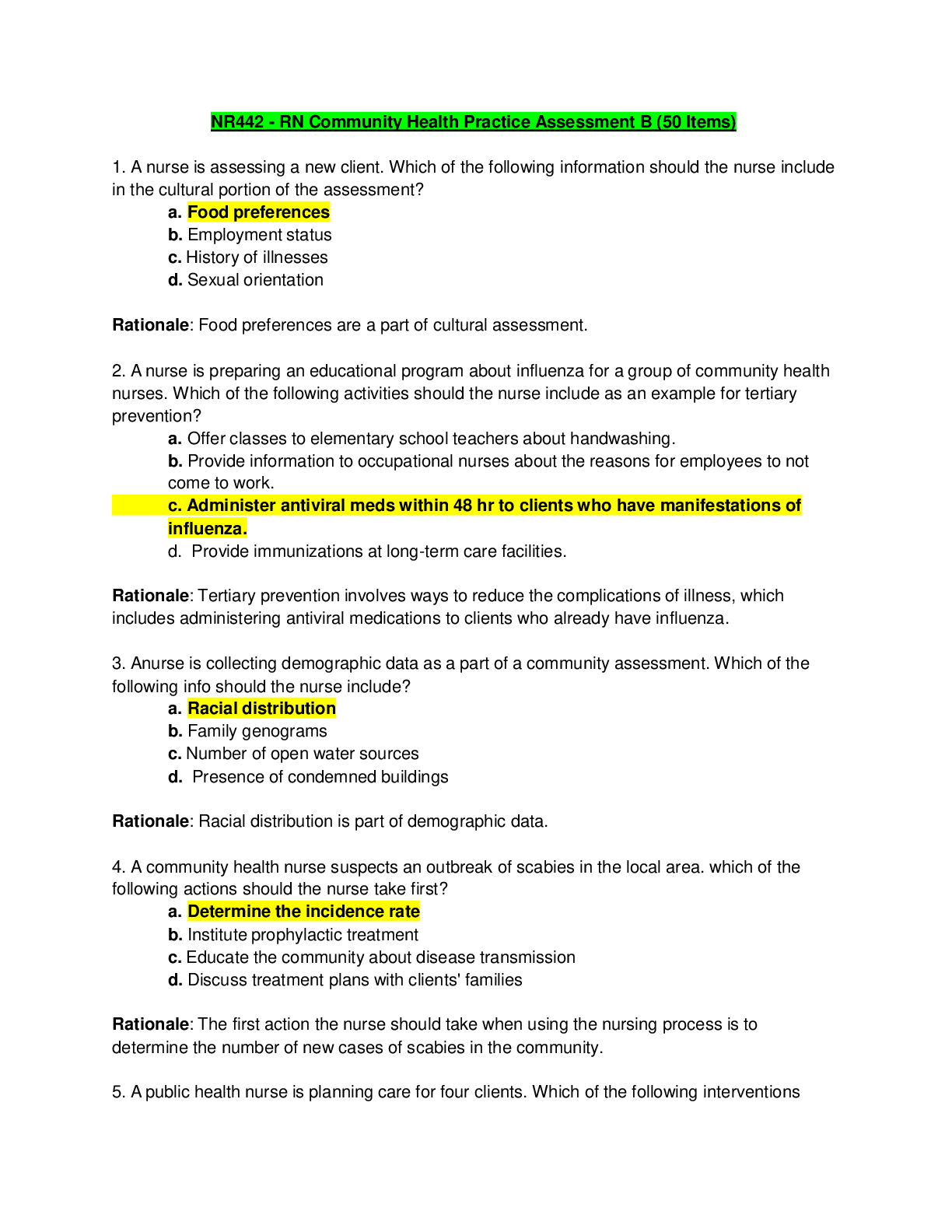
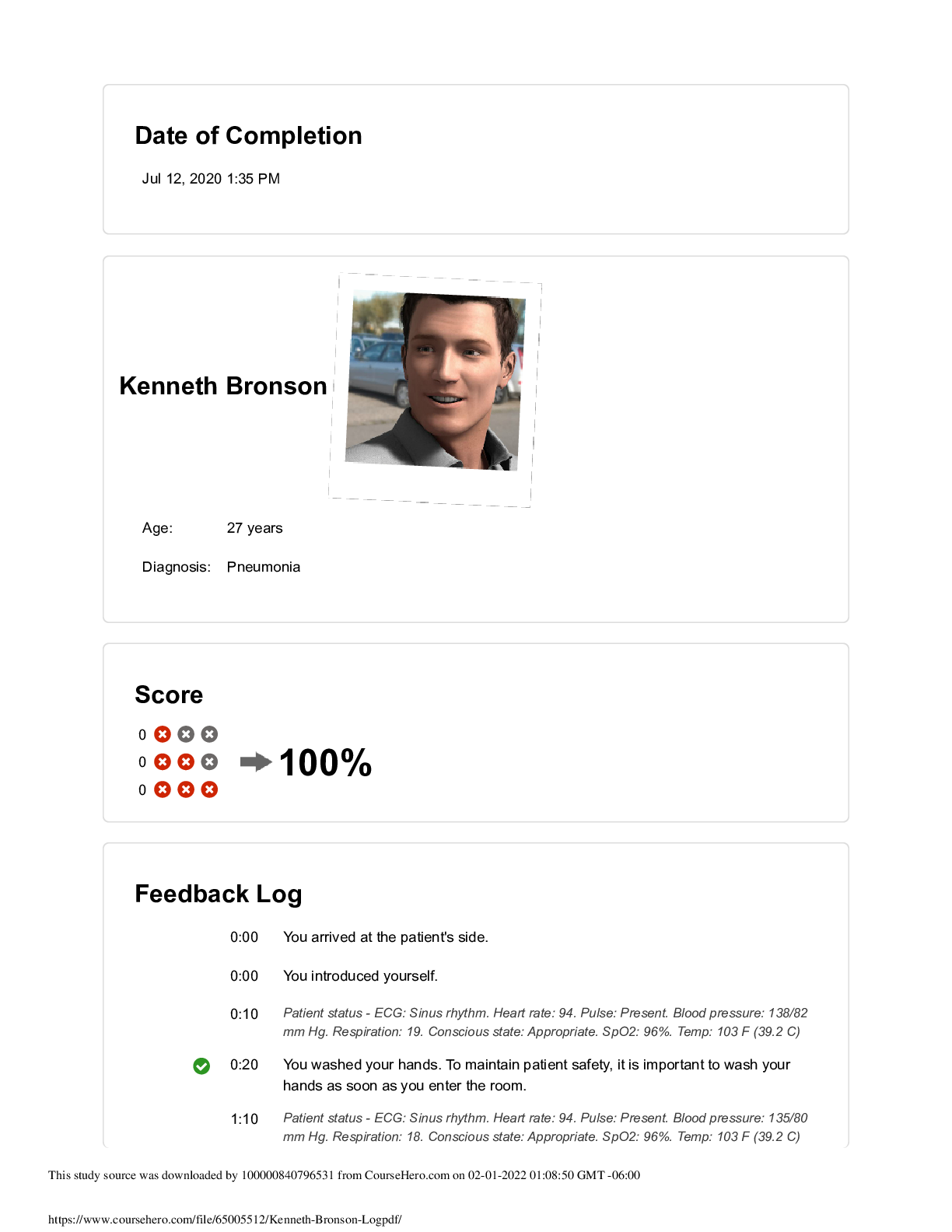

.png)

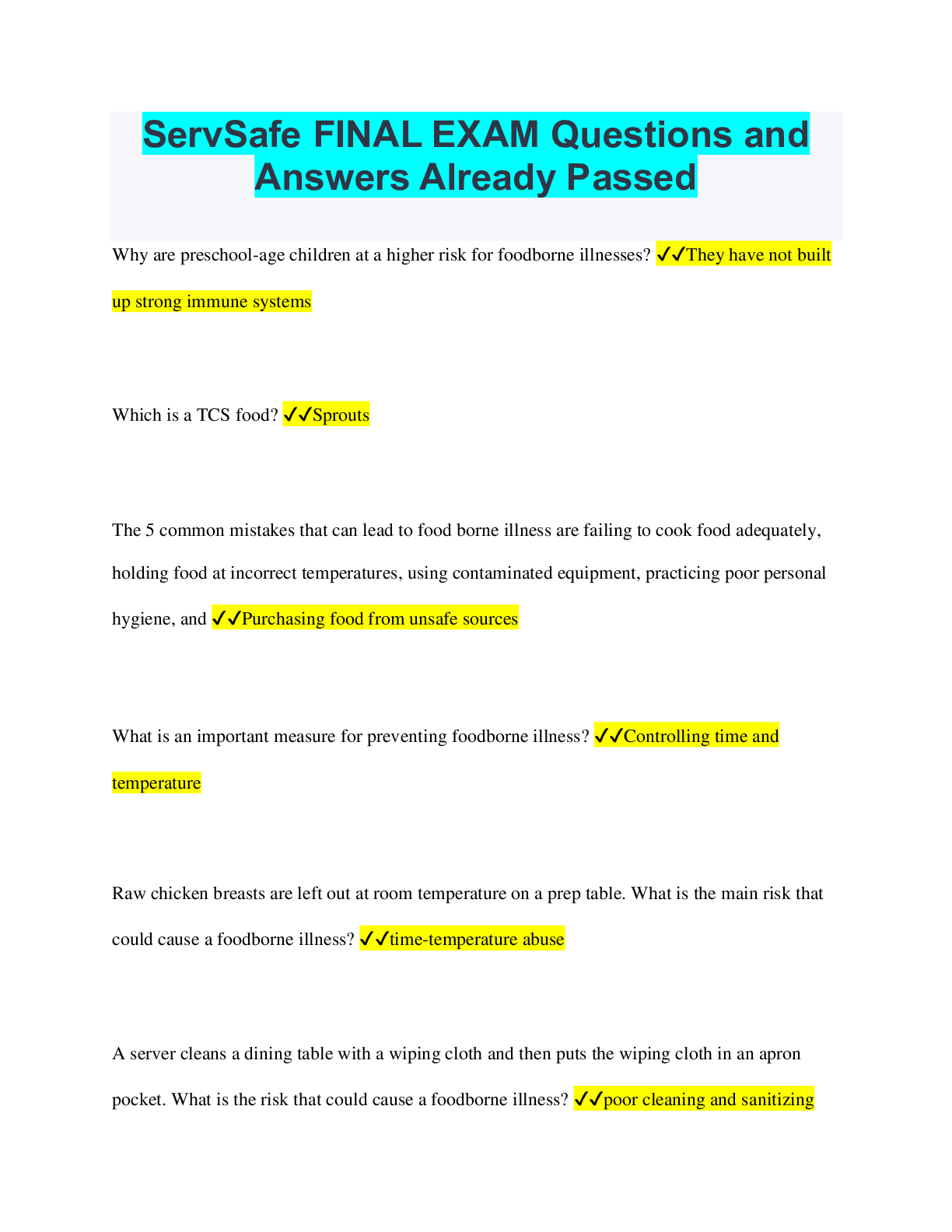
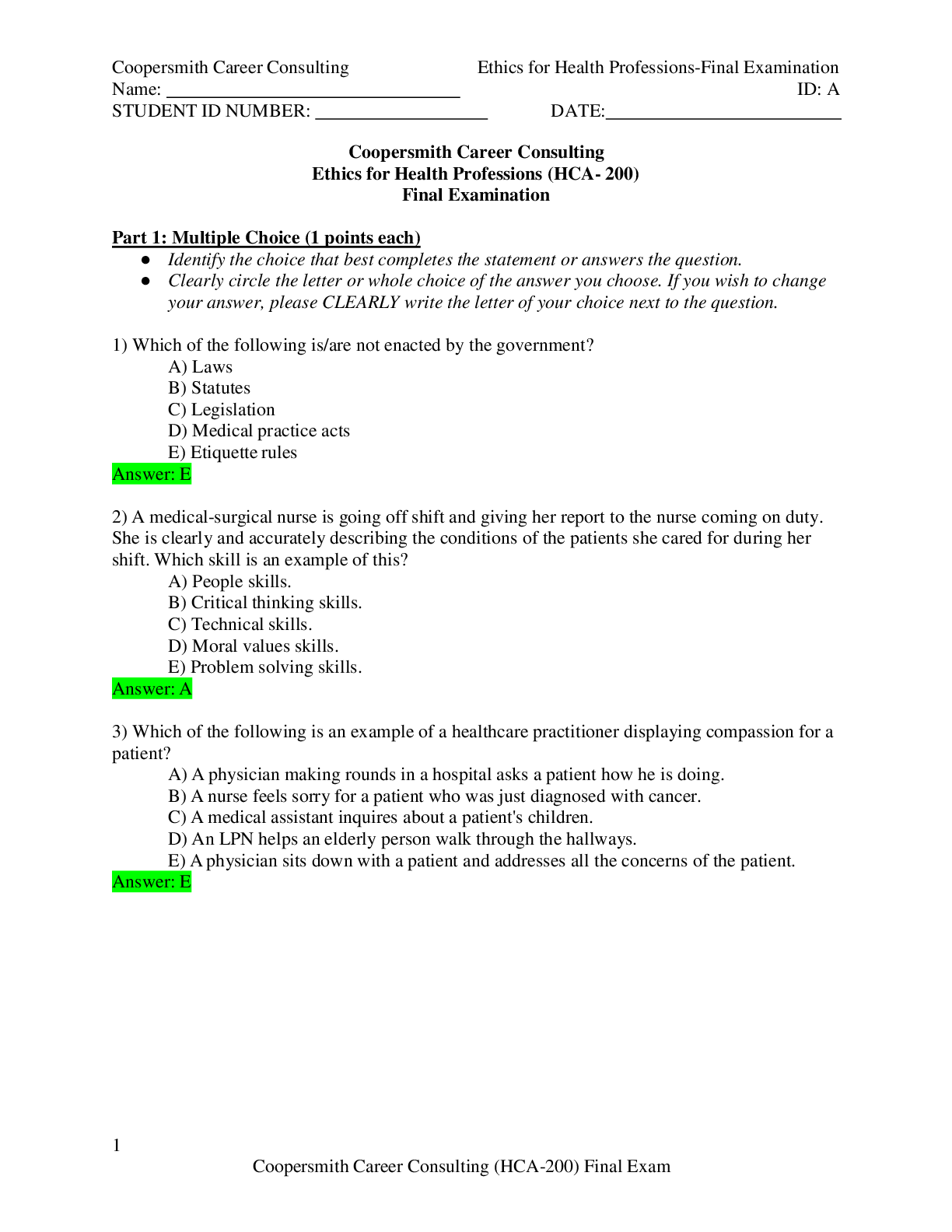
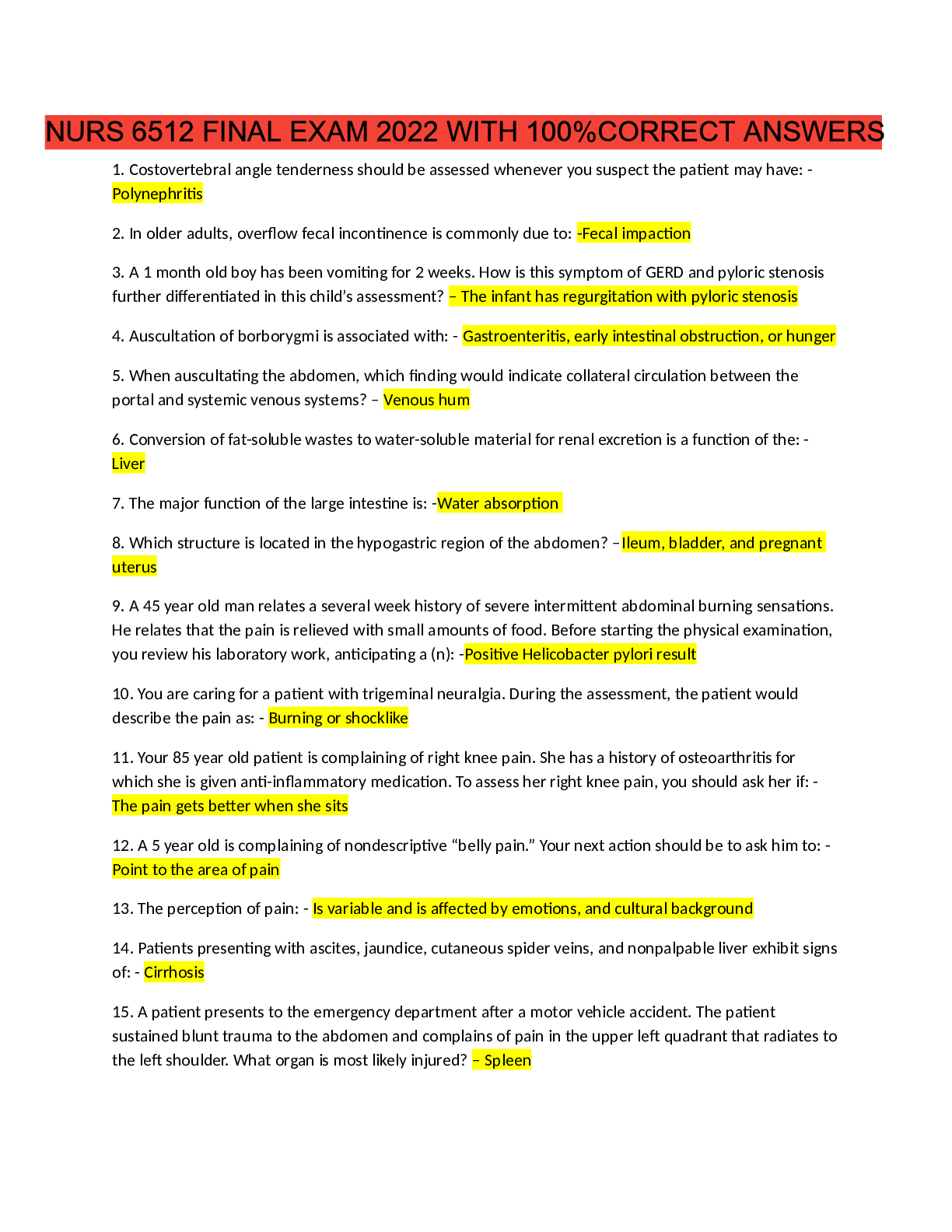
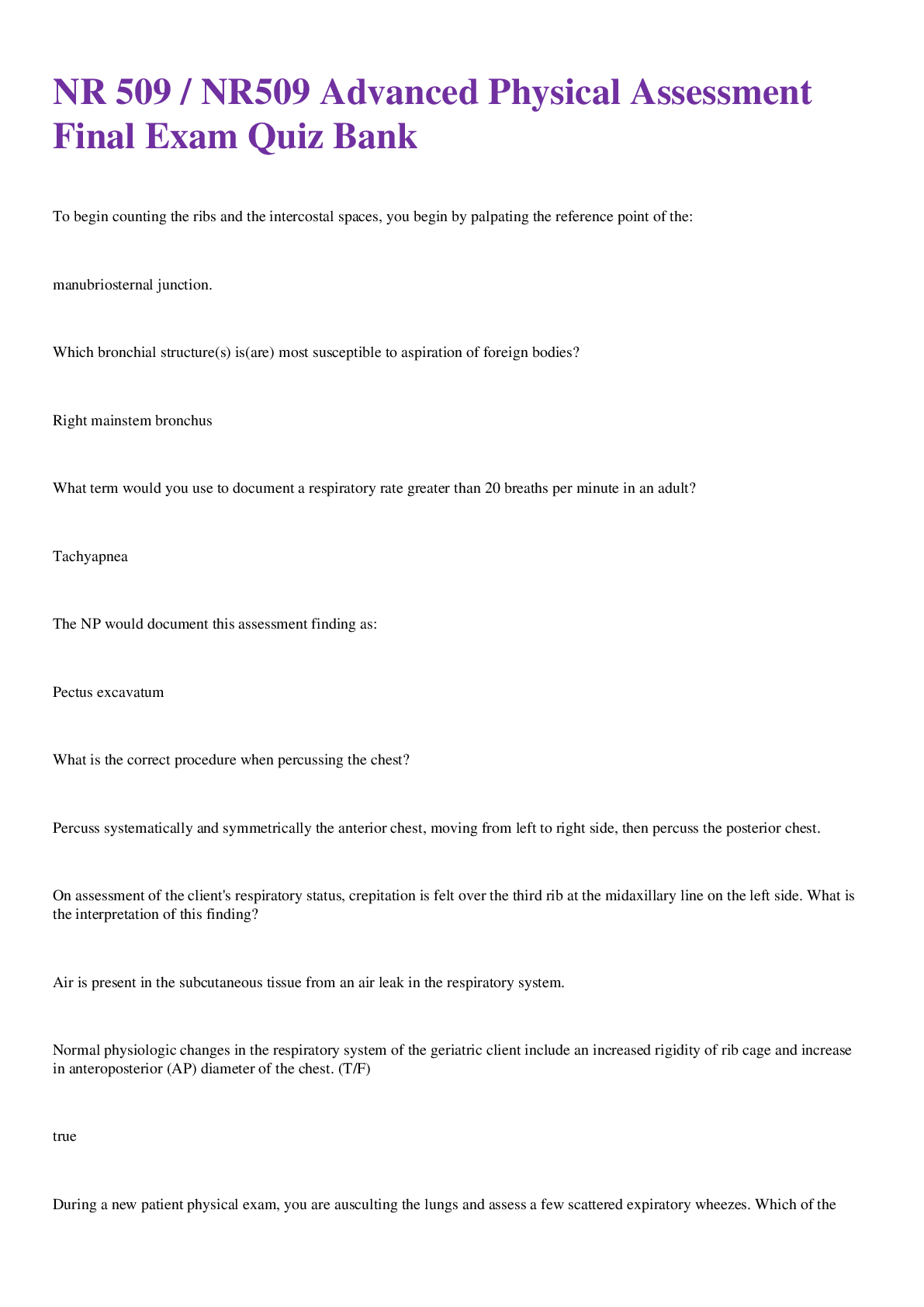
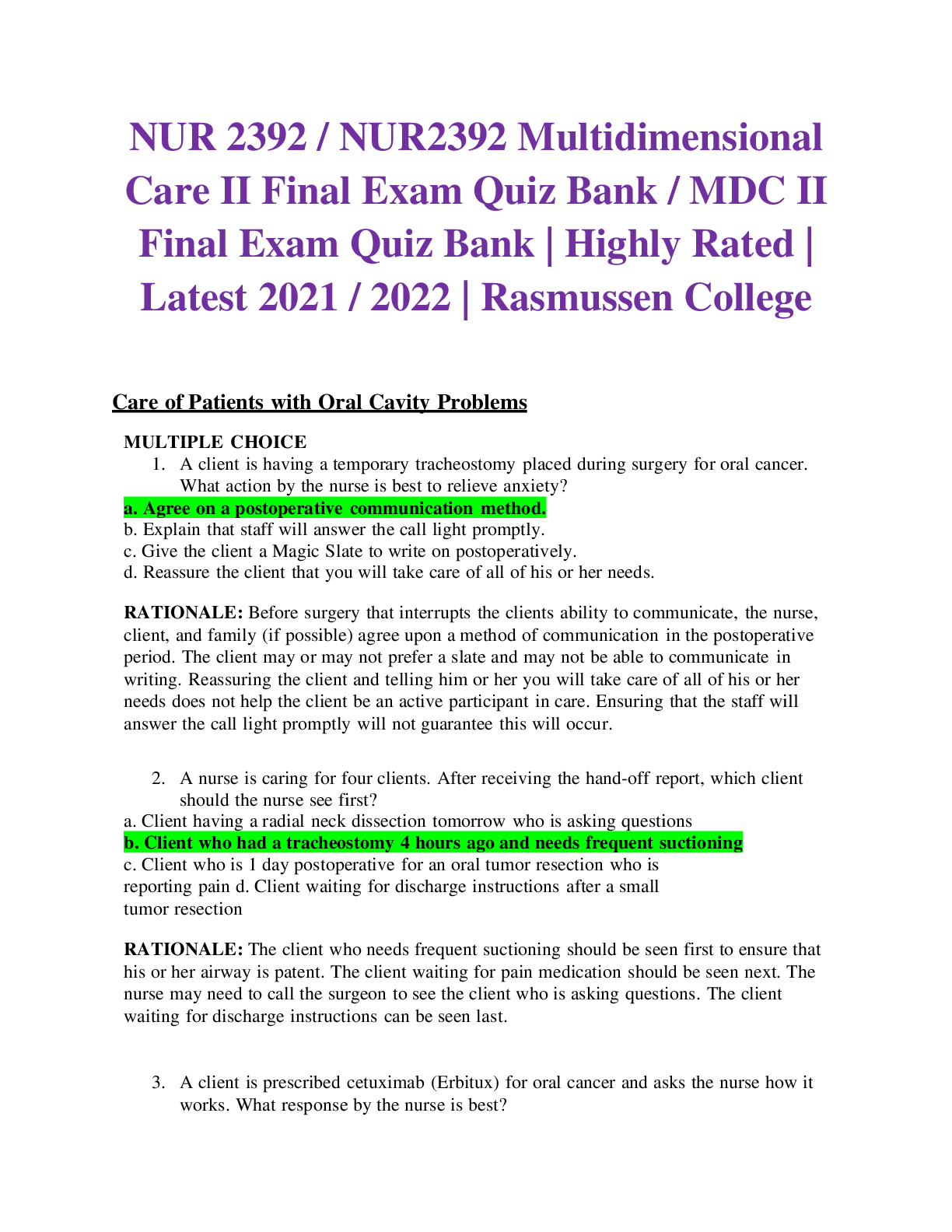
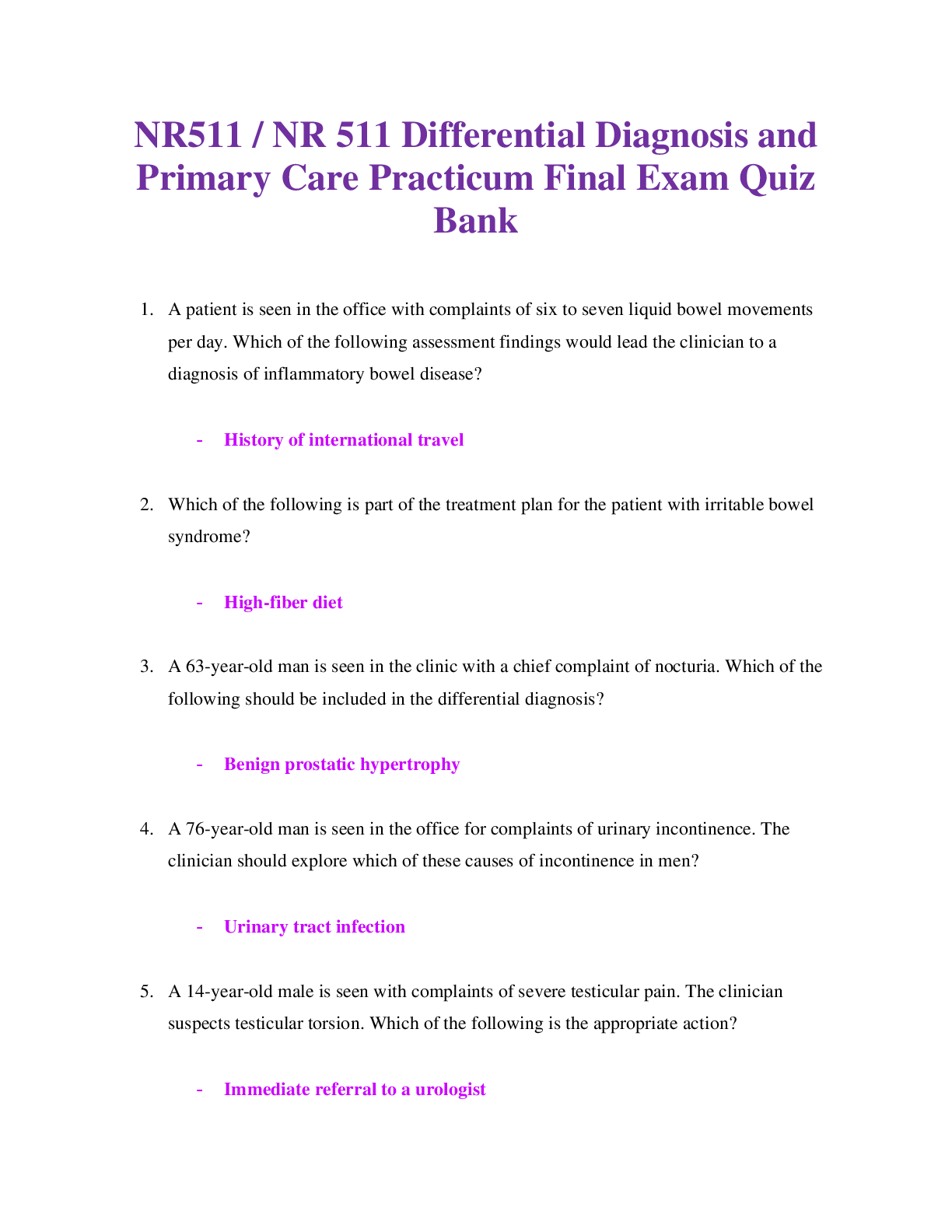

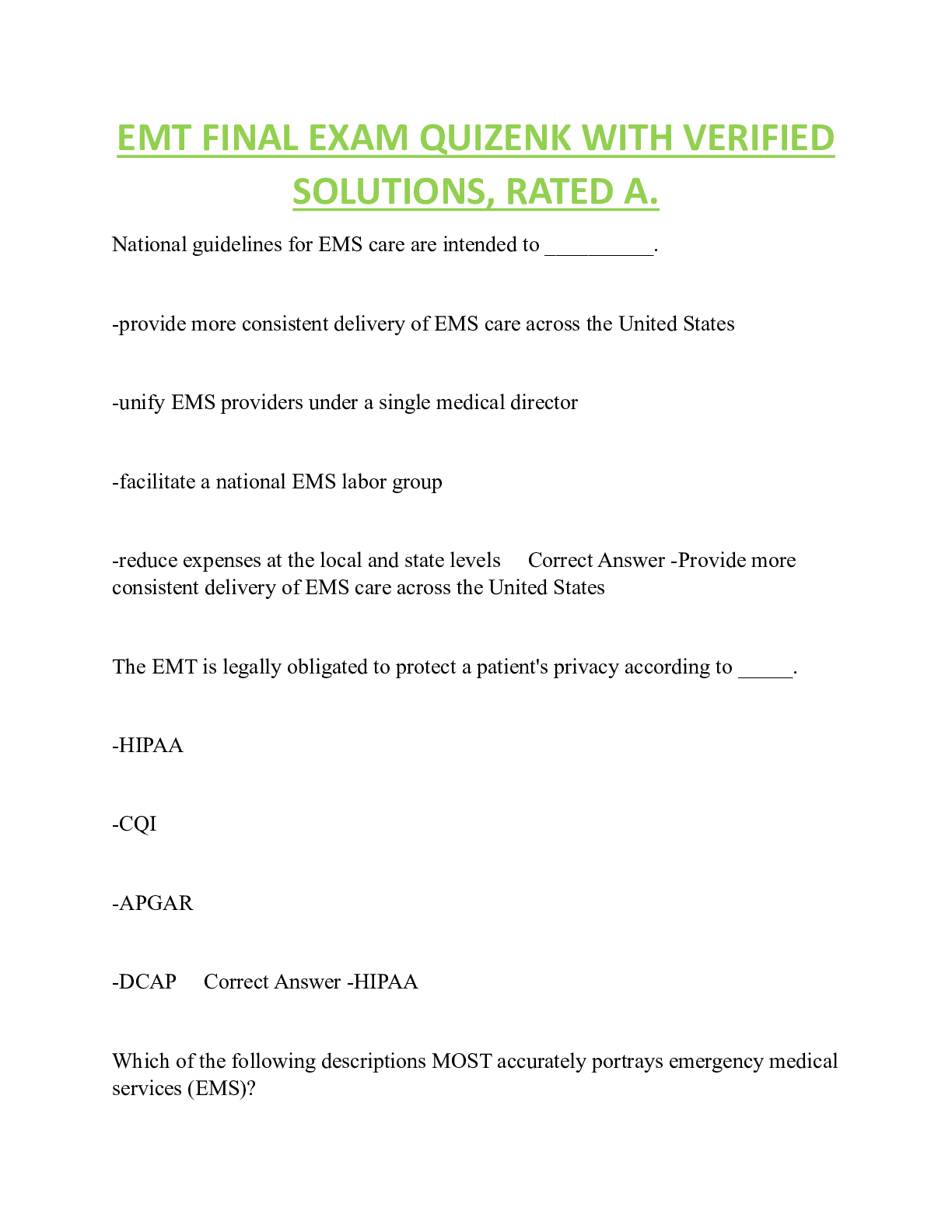
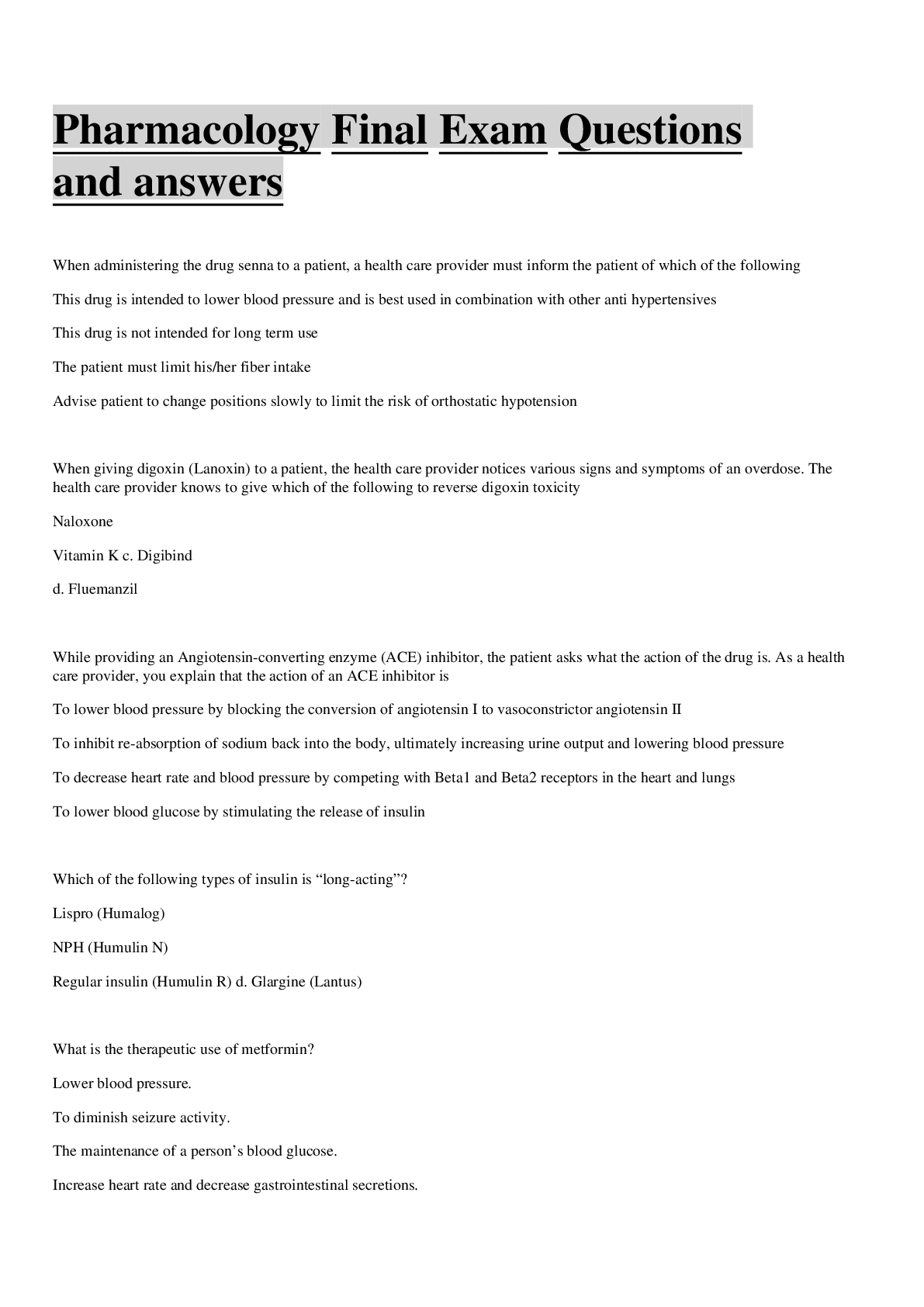
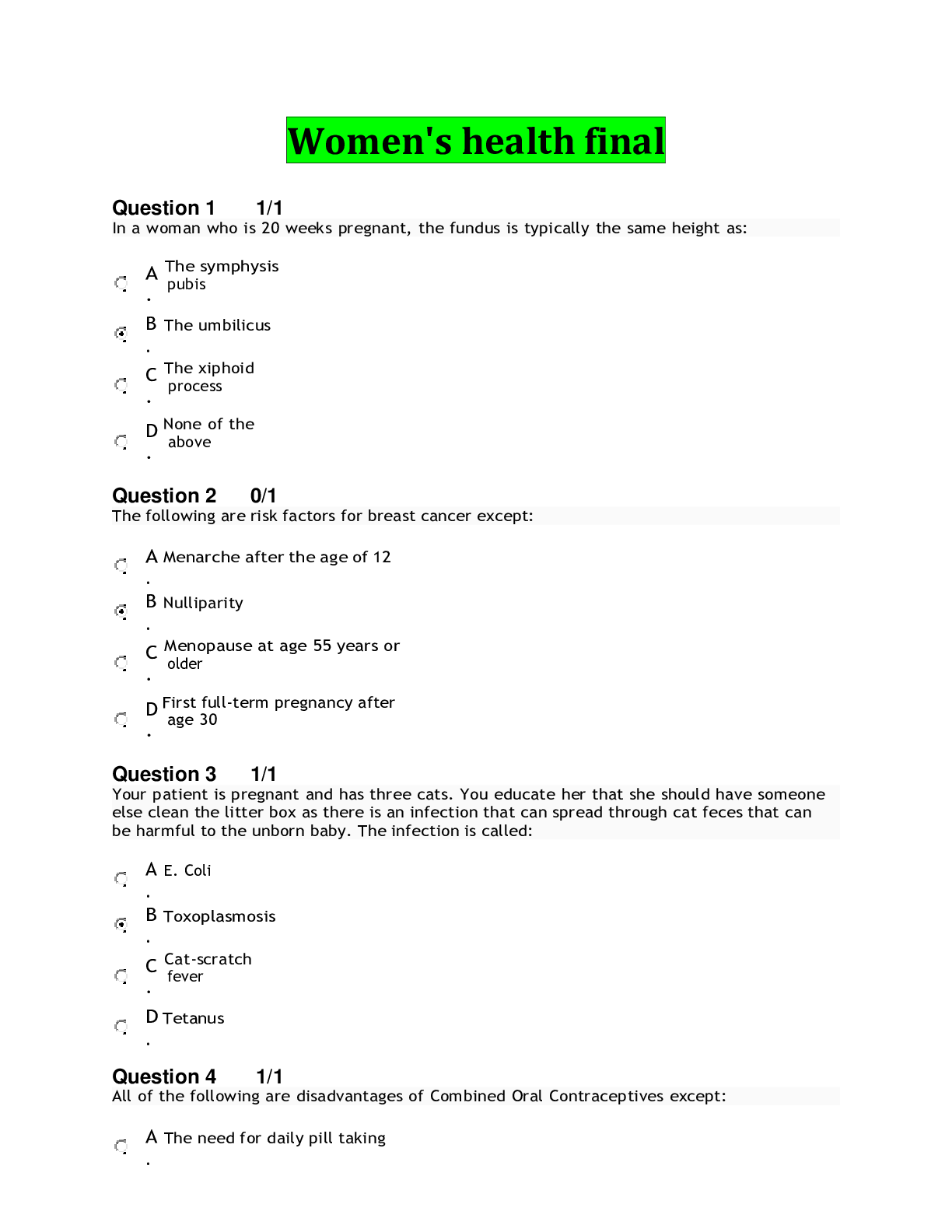



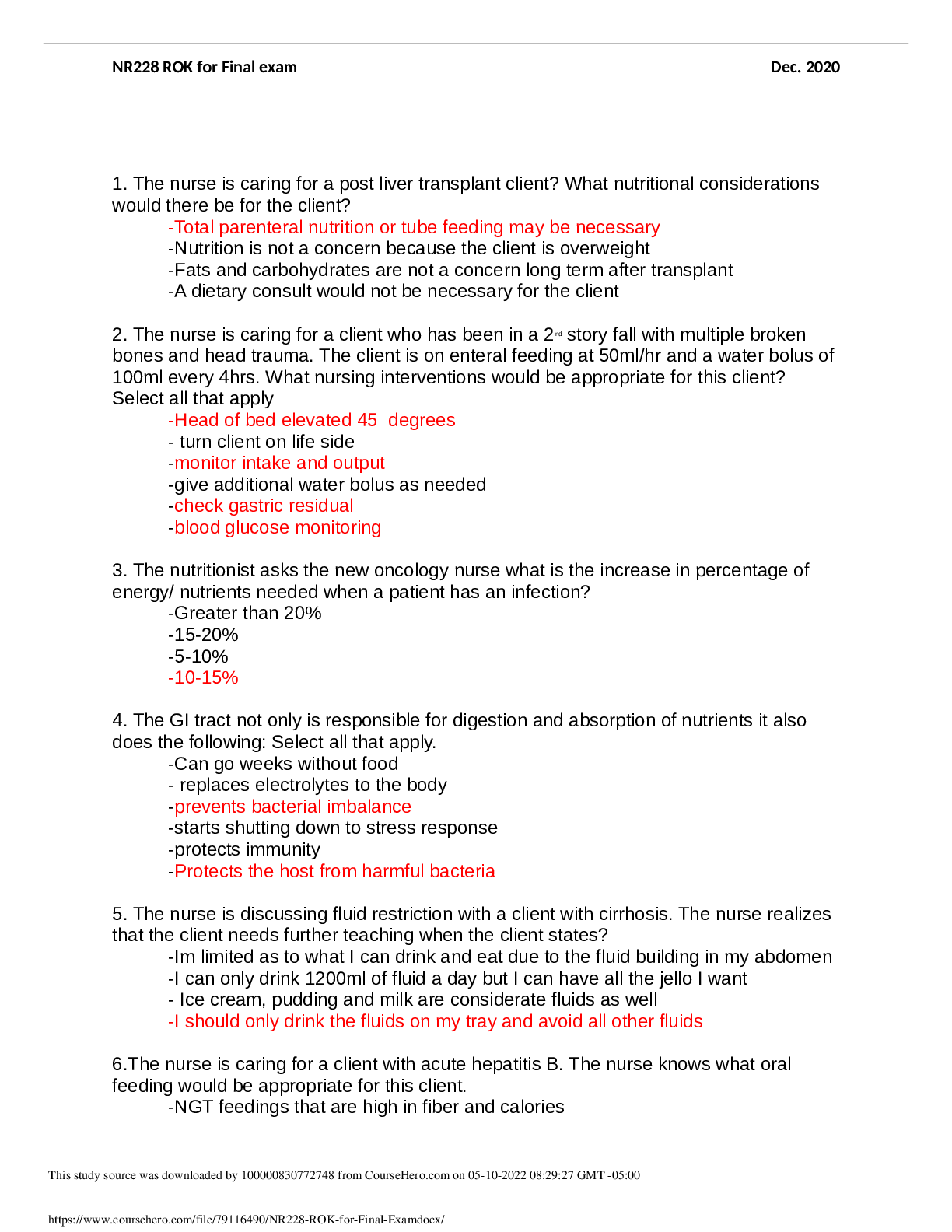

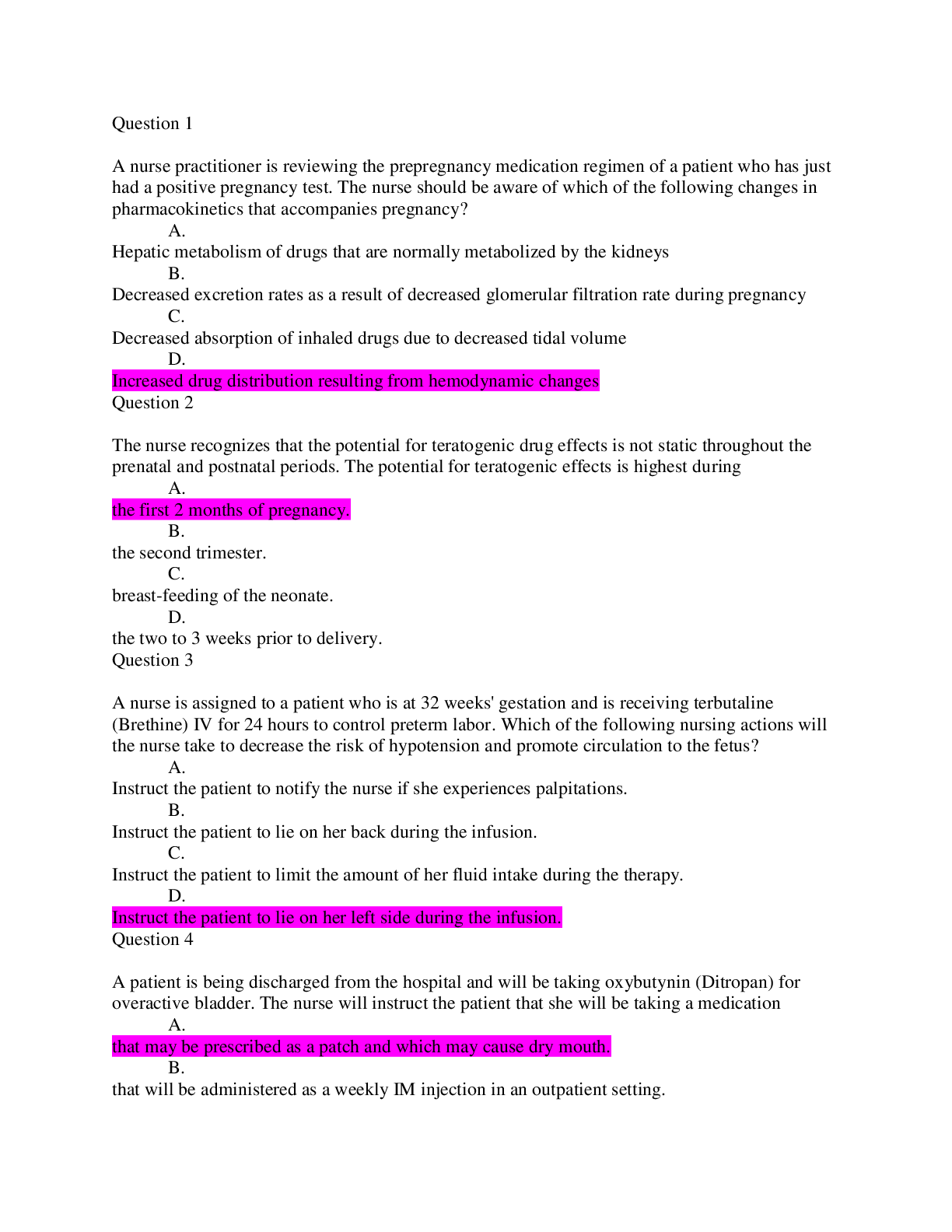
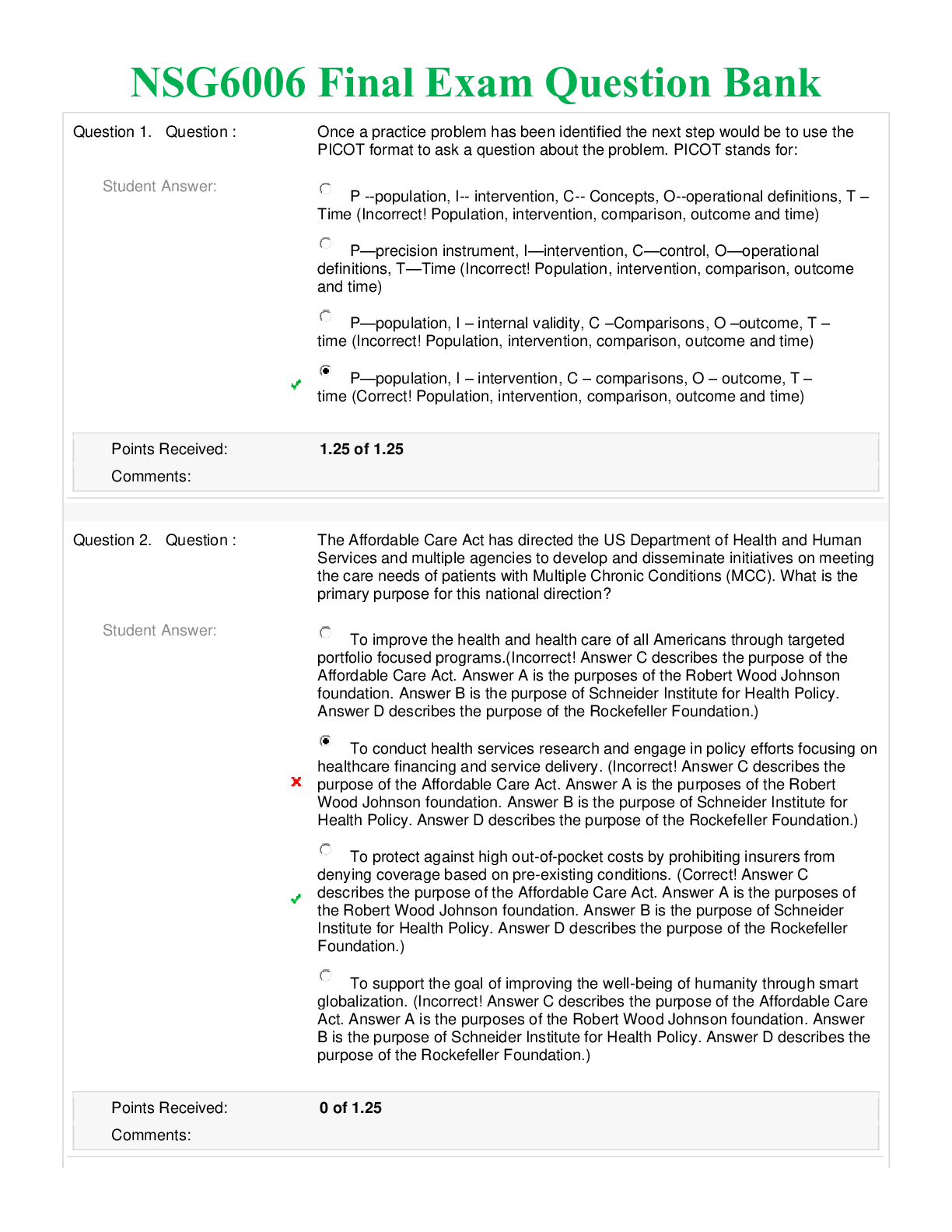

.png)

